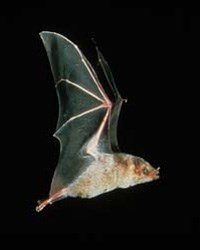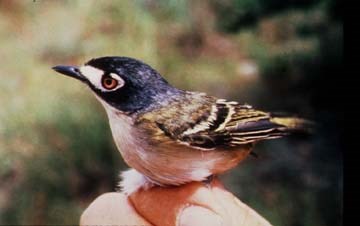
NPS Photo/Big Bend National Park We humans may be too successful. In expanding over the earth, we have extinguished many forms of life and threatened the existence of still others, greatly accelerating the natural rate of extinction. This weakens the system on which all life depends and impoverishes the quality of our life. Fortunately, many countries and groups are taking steps to stop this loss. The National Park Service's role is to provide undisturbed habitat in the United States where all species, including endangered ones, can continue to exist, subject only to the forces of nature. There have been successes, in parks and elsewhere, and this is a symbol of hope. For it signifies that we can stop the worldwide slide of extinction that we started. The effort to halt human-caused extinctions in the United States is guided by the Endangered Species Act of 1973. This act defines an "endangered species" as any plant or animal species that is in danger of extinction throughout all or a significant portion of its range. A "threatened species" is one that is likely to become an endangered species within the foreseeable future throughout all or a significant portion of its range. The goal of the act is to restore all federally listed endangered threatened species to the point where they are again viable, self-sustaining members of ecological communities.The major federal legislation protecting endangered species is the Endangered Species Act of 1973. Following the Federal Government’s lead, Texas passed its own endangered species laws later that same year. In general, species that are federally listed as endangered or threatened are also listed by states. However, a species listed by a state may not be listed federally. This is the case with the black bear (Ursus americanus) which is uncommon in the park. Only federal legislation, however, mandates the protection of critical habitat of endangered species, often the key to recovery. In Big Bend National Park, all habitats are protected, benefiting all species irrespective of their status. Extinct from the park for more than 40 years, black bears migrated from northern Mexico mountains to reestablish a small population within the park during the late 1980s. Although the Chisos Mountains are the most likely place in Texas to see a black bear, a key to their success will be managing the recreational habits of people, namely where and how food and garbage are stored.
© Photo courtesy J. Scott Altenbach The Mexican Long-nosed bat (Leptonycteris nivalis) occurs in the U.S. only in Big Bend where a single colony resides in the Chisos Mountains. Their diet consists of flower pollen and nectar and their migration between the park and Latin America is timed to coincide with the blooming of specific plants, including the century plant (Agave havardiana). One problem for bats in general is their bad reputation as vampires and carriers of rabies, often leading to their mass destruction. An additional problem is the harvesting of agaves, without re-vegetation, for the production of tequila. Any loss in this food source is especially critical considering the mammal's high metabolic rate during migration and while roosting in cool caves. Once populations decrease, recovery is difficult because each fertile female only produces one offspring each year. In Big Bend, their numbers appear to fluctuate year to year, but current census techniques may be inaccurate and the true population status of these bats is unknown. Better census techniques must be developed to better interpret the status of these bats.
Guadalupe fescue (Festuca ligulata) is the most recent species in the park to be added to the Endangered Species List. Guadalupe fescue is a short-lived perennial grass species found only in the high mountains of the Chihuahuan Desert in the Trans-Pecos region of Texas and in the State of Coahuila, Mexico. The species has been reported from only six locations, however, only two of these populations remain; one population in the Chisos Mountains within Big Bend National Park, and one population in the Maderas del Carmen Mountains in northern Mexico. Guadalupe fescue is threatened by the scarcity and small size of its populations, and the isolation of its populations from each other, all of which can negatively impact its genetic variation; reduced frequency of wildfires; livestock grazing (direct predation of plants); invasive species; effects of climate change such as higher temperatures and changes in the amount and seasonal pattern of rainfall; fungal infection of seeds; and runoff from trails.

NPS Photo/Big Bend National Park A number of plants and animals in Big Bend National Park are listed federally for protection. Among them are the black-capped vireo, Mexican long-nosed bat, Big Bend gambusia, Rio Grande silvery minnow, and Chisos hedgehog cactus. Along with these are also species that are listed as threatened or endangered in the state of Texas, by Texas Parks and Wildlife. This state list includes the above species along with the American black bear and the Texas horned lizard. |
Last updated: October 9, 2017
